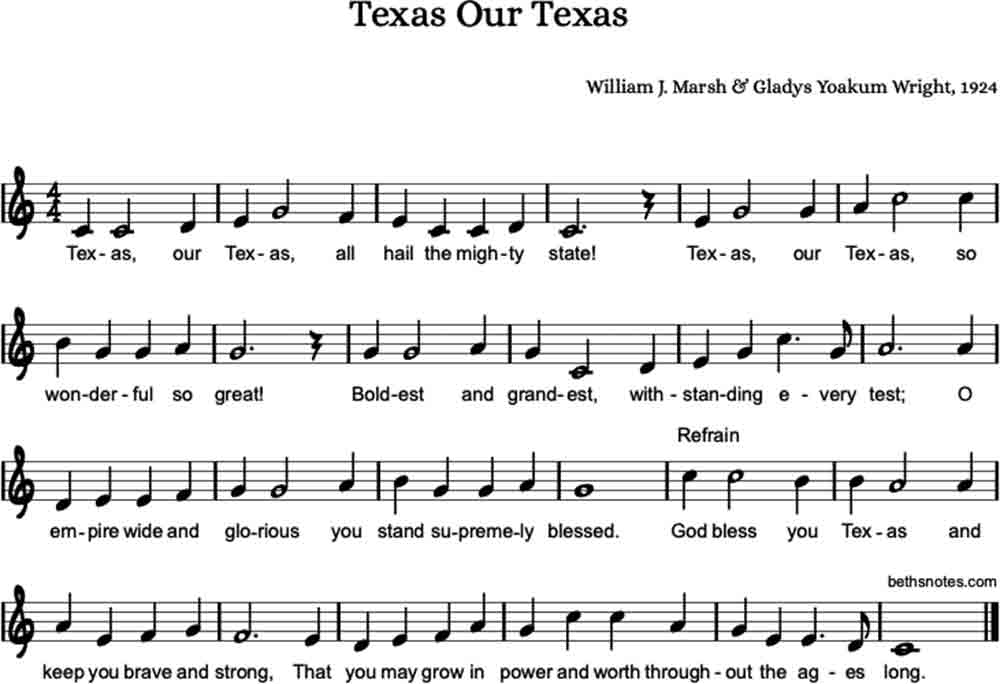
By Jan White
This email address is being protected from spambots. You need JavaScript enabled to view it.
On March 2, Texans across the state will celebrate the adoption of the Texas Declaration of Independence when, in 1836, 59 delegates officially declared their liberation from Mexico and created the Republic of Texas. Residents of the Lone Star State will proudly display their Texas flags and celebrate with fireworks, parades, barbeque cookouts, picnics, and special programs in the state’s capital city, Austin. And some might even sing the state song, Texas Our Texas.
But do you know the origin of the song chosen to represent the Great State of Texas?
It was 1923 when Governor Pat Neff concluded that the state needed a state song. There was a state tree, the pecan, a state bird, the mockingbird, and the state flower, the bluebonnet. So why not have a state song? Neff issued a challenge to the citizens of Texas, offering a $1,000 prize to the winner.
Related Articles
Gladys Yocum Wright, a native of Greenville, Texas, who relocated with her husband to Fort Worth, was an accomplished poet. William J. Marsh was born in England but moved to Fort Worth in 1904. Marsh became known for his work as a composer, choir director, and music professor at Texas Christian University. Friends of Wright and Marsh suggested that they join forces and submit a song for the competition.
Two hundred and eighty-six songs were submitted, including an old favorite, The Yellow Rose of Texas, that dated back to the 1850s. It only took two days for the governor to make his selection, which he announced just five days before his term ended. Texas Our Texas was the hands-down winner. But it wasn’t until 1929 that the 41st Legislature adopted the song, and it was March 11, 1930, when Wright and Marsh learned that their composition was the new state song.
The song was sung regularly by elementary school students during the 1950s and into the 1990s, usually at the beginning of their school classes, along with the Pledge of Allegiance and the Pledge to the Texas Flag. In 1959, Alaska’s inclusion into statehood required that the phrase “largest and grandest” be modified to “boldest and grandest.”
In this, the 187th year of Texas Independence, remember the lyrics of our state song and that God will continue to bless Texas and keep it brave and strong, that it may grow in power and worth throughout the ages long.
You are a guest
or post as a guest
Be the first to comment.

